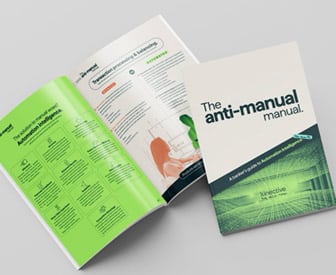The report: The Evolution of Banking in the 21st Century: Evidence and Regulatory Implications [March 2024]
Source: The Brookings Institution
Last year brought three of the largest bank failures in U.S. history: Silicon Valley Bank, Signature Bank and First Republic Bank. And while bank runs are nothing new, technology and social media have made them far faster and more volatile than in the 20th century. To address these failures and inform discussion of an appropriate regulatory response, The Brookings Institution looked at banking trends over the past 25 years.
It notes that the liability side of bank balance sheets has grown rapidly, while the asset side has seen a notable shift away from information-intensive traditional lending to long-term securities. Brookings notes these trends are related, as banks with the most rapid deposit growth have seen the biggest decline in loans as a share of assets. The nonprofit research organization constructed a simple model to assess regulatory options to reduce the risk of destabilizing bank runs. It found strengthening liquidity regulation to be the most viable solution.
Key Takeaways
- Over the past 25 years, the banking industry’s revenue generation model has become more dependent on long-term securities than traditional lending.
- Social media and technology have made bank runs faster and more volatile than they were in the 20th century.
- To learn about how the industry may better mitigate risk, Brookings created a simple model to help assess regulatory options to reduce risk.
- Brookings believes the best solution is a regulatory change that would require banks with more than $100 billion in assets to back their uninsured deposits by pre-positioning in collateral, mainly in the form of short-term government securities, at the Federal Reserve’s Discount Window.
What we liked: Brookings digs deeper than many industry reports, taking a research-based approach to learning about the banking industry’s evolution and regulatory implications.
What we didn’t: The paper reads more like a Ph.D. dissertation than an informative and actionable report. There’s a lot of academic language, and some parts of the paper seem geared more towards researchers than bankers.

Creating A Community with CQRC’s Branch Redesign
Find out how SLD helped CQRC Bank to create the perfect harmony of financial services, local culture, and the human touch in their branch transformation.
Read More about Creating A Community with CQRC’s Branch Redesign

Why Industry Cloud for Banking?
PwC’s Industry Cloud for Banking helps deliver personalized products and services that today’s customers expect.
Evolution and New Revenue Models Present New Risk
Brookings notes the banking industry has changed in several ways over the last 25 years.
The rise of nonbank corporate lending: Traditional banks now deliver a much smaller share of credit to nonfinancial corporations than 25 years ago. The portion of banks holding non-mortgage loans to nonfinancial corporations fell from 57% in Q4 2000 to 35% in Q3 2023.
A bright spot: One area where banks haven’t lost ground to non-banks is providing commitment-based revolving loans to corporations. As of Q2 2022, banks held over 97% of the $1.4 trillion outstanding syndicated revolving loans. This implies that most of the gains in market share made by non-banks have been in the form of installment credit.
Two major changes: Brookings notes that banks have historically earned revenues by screening and monitoring borrowers. However, this model of information-intensive lending has come under pressure as non-banks have steadily gained more share in business lending. Another new development over the past quarter century is a dramatic growth in the economy-wide ratio of bank deposits to GDP, much of this growth coming from large uninsured deposits.
“Specifically, we propose a regulatory change that would require banks with more than $100 billion in assets to back their uninsured deposits by prepositioning collateral — largely in the form of short-term government securities — at the Federal Reserve’s Discount Window.”
The result of these two trends is a shifting of banks’ asset portfolios towards categories where there is less presumption that they have unique comparative advantages. Larger banks have been the most impacted by competition from non-bank lenders, and the share of securities in their portfolios has increased significantly in recent decades. As a result, they are looking more like long-term bond mutual funds, leading Brookings to question whether and how regulators should modify deposit insurance coverage and bank liquidity regulations.
Growing risk: Brookings notes the bank failures of early 2023 highlighted a dramatic vulnerability of liquidity risk created by the combinations of uninsured deposits and technological and social media innovations, which have accelerated bank runs and made them more volatile than before.

New Regulatory Options to Mitigate Risk
The Brookings Institution constructed a simple model to help assess the regulatory options to reduce the risk of destabilizing bank runs. Based on this model, it offers some design ideas to modify the Liquidity Coverage Ratio to require banks to pre-position sufficient collateral and ensure they have enough liquidity to withstand a bank run.
Two potential solutions: There are two ways to mitigate the risk moving forward. One is to increase the scope of deposit insurance, so that most deposits are insured and less likely to run. The other solution is to subject uninsured deposits to liquidity requirements to lessen the risk of a run on the bank’s financial stability. Both options offer benefits but come at different costs. Expanding deposit insurance would create additional hazards and expose taxpayers to greater losses. Meanwhile, stricter liquidity requirements may crowd out some valuable information-intensive lending.
The Brookings recommendation: Between the two options, Brookings believes the cost of tougher liquidity requirements is lower. It proposes a regulatory change requiring banks with more than $100 billion in assets to back their uninsured deposits by pre-positioning in collateral — mostly in the form of short-term government securities — at the Federal Reserve’s Discount Window. Brookings notes federal banking agencies could implement the proposed regulatory change by modifying current Liquidity Coverage Ratio (LCR) requirements.
Read more:
- Uninsured Deposits & Commercial Real Estate Loans Are Focus of Earnings
- Will GenAI be Your New Manager of Risk and Compliance?
Other policies: Beyond this, Brookings recommends other regulatory policies including treating interest-rate risk in the regulatory capital regime. One issue is the risk-based capital requirements currently don’t account for the ex-ante interest rate risk on long-duration securities. Additionally, even ex-post market-to-market losses on these securities do not flow through banks’ regulatory capital. In an era where uninsured deposits make up a larger share of bank capital than in previous decades, Brookings believes these policies need to be reconsidered. It also believes there should be a greater focus on merger policy.
Analysis suggests that the business model of regional banks may be particularly vulnerable to the new shaping forces of the banking industry in the coming years as they have lost a large part of their core business lending franchise to non-banks. This will leave them disproportionally reliant on their deposit franchises for ongoing viability. Brookings notes regional banks may also not have sufficient economies of scale and scope to compete with the largest banks. As a result, it believes mergers of mid-sized regional banks could support the process of consolidation while minimizing negative effects on financial stability.







